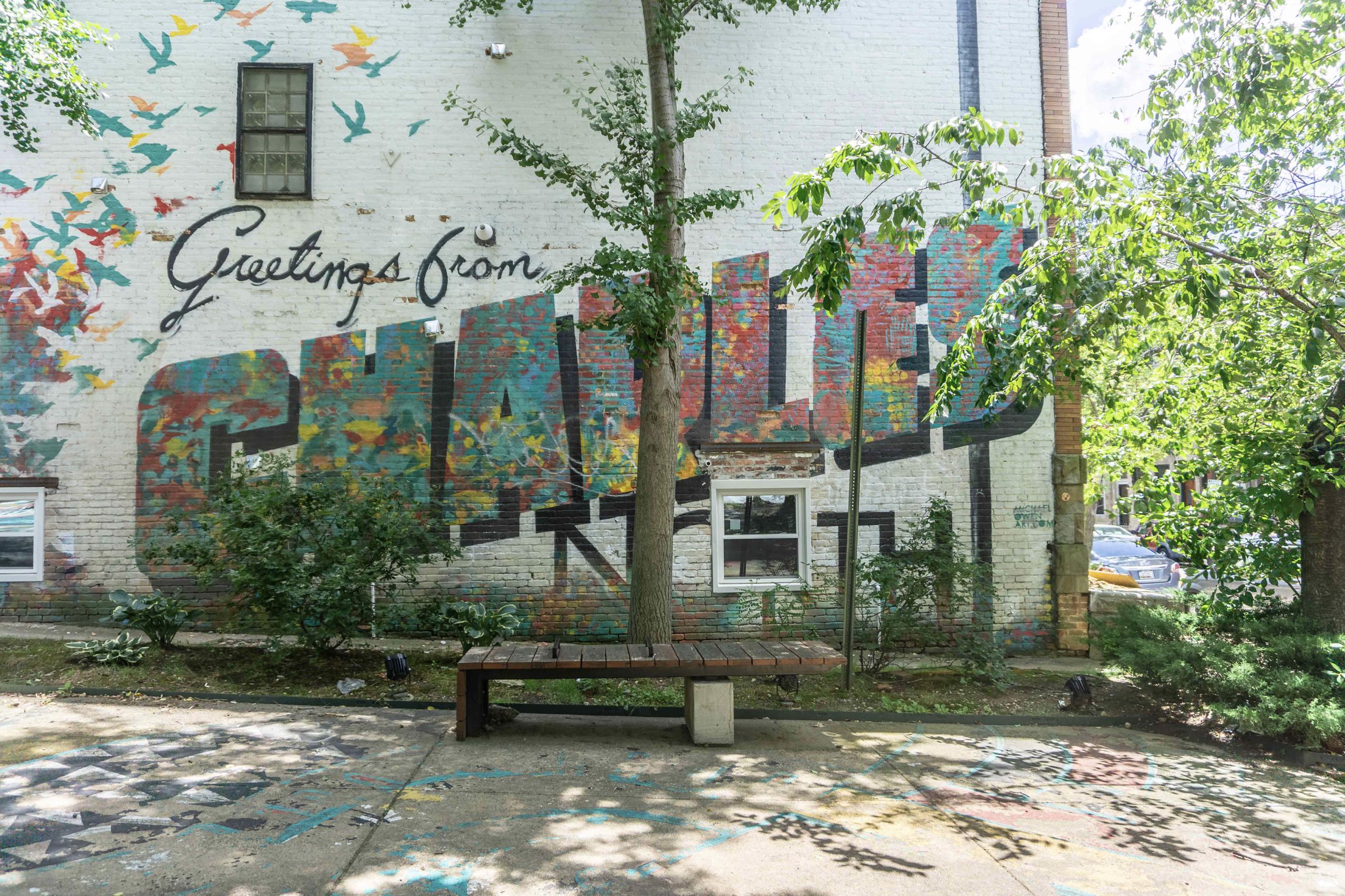The Charles North CHAP District Proposal
Share your views on Charles North implementing a CHAP district
Charles North is a diverse, vibrant community in Central Baltimore, the heart of the Station North Arts & Entertainment District, and a mix of historic residential and commercial structures, magnificent churches, entertainment and dining venues, and “a funk” found nowhere else in the City. Our rough boundaries are the Jones Falls to the West, 22nd Street to the North, Hargrove Alley to the East, and Mount Royal Ave. to the South. While Charles North has significant historic assets which need to be preserved, maintained and restored, we’re also a community on the move and looking towards the future, with major commercial, institutional, residential, and arts-related developments recently completed (The Univ. of Baltimore Angelos Law Center, the Motor House, the Centre Theatre, the Pen & Quill restaurant, the prominent LED billboard) and more coming soon (The Parkway Theatre, the Lanvale St. Residences, the former Odell’s, etc.).
The Charles North Community Association (CNCA) is the community association of record for this neighborhood, as specified by the Charles North Urban Renewal Plan, which is enforced by City ordinance. CNCA is currently exploring the possibility of implementing a CHAP (Commission for Historical and Architectural Preservation) District for the neighborhood. While many CHAP Districts exist in Baltimore to ensure historical preservation, the Charles North District would be unique, in that our goal is to both honor and preserve our past, and embrace our future as the premiere arts, entertainment, and cultural crossroads in Baltimore. We envision accomplishing this through a set of standards for new design and construction, as well as rehabilitation of existing historic structures, that preserves historically significant buildings, encourages dramatic new architecture in context, and keeps “the funk” that is the hallmark of the Station North District.
Artistic Expression Zone – One major element of a Charles North CHAP District will be the creation and designation of Charles North as an Artistic Expression Zone. The purpose of this zone is to encourage significant artistic creativity within Charles North while at the same time respecting the historic character of the overall neighborhood and many of its buildings. The guiding principle behind artistic expression and historic preservation is the idea that “alterations that are made in the spirit of artistic expression should be reversible in nature and should not in any way disrupt original or significant architectural features.” This will be a unique designation for Charles North, currently found in no other CHAP District within the city of Baltimore.
New Construction Guidelines – Another major element of a Charles North CHAP District will be the development of a set of rather unique guidelines for new construction in the neighborhood. With an abundance of empty surface lots, etc., the potential for large scale development here in Charles North is enormous. Yet, currently, there are rather limited construction guidelines for that development and very little opportunity for direct community involvement in the design and development process. The guiding principles behind these guidelines will be community review and continuity within the historic fabric of Charles North.
There are both benefits and costs to becoming a CHAP District in the city of Baltimore. Benefits include increased property values because of the preserved character of the community as a whole. This is accomplished over time as the community itself is held to a higher standard of preservation than in other non-CHAP Districts. Another benefit is the increase in historical continuity within the District as the risk of offensive or architecturally inappropriate buildings or renovations is reduced across the District. This leads to a more pleasant urban atmosphere in which to live, work and play. Costs include reduced autonomy over new construction or renovations, both in terms of design and in terms of materials used. Historic preservation and renovation is simply more expensive to do than non-historic preservation and renovation and this will impact the future of the neighborhood as whole in many ways both positively and negatively. The character of Charles North will change over time.
It is important also to note here that a Charles North CHAP District will be a less restrictive CHAP District than those seen in other areas of the city. This is primarily because of the limited number of historic landmark and contributing structures in the District and a preponderance of oft-empty surface lots. A Charles North CHAP District will emphasize the historic preservation of what is here, where that is appropriate, but will not take a “museum” approach to the historic preservation of every structure within the District.
We are soliciting your participation in this survey to help us gauge the level of interest in CHAP among all of the Charles North stakeholders. The CNCA will take no position which encourages the formation of a Charles North CHAP District until we are assured that the members of the CNCA and the community at large support this proposal.
If you have questions about local historic district designation, please visit the CHAP website for more information: http://chap.baltimorecity.gov/historic-districts/local-historic-district-designation. You may also contact us at cnca.office@gmail.com for more specific information on the proposed Charles North CHAP District.
Thank you for participating in our survey. Your feedback is important.
CNCA ANNUAL MEETING AND CHAP DISCUSSION SUMMARY
Charles North Community Association Meeting
March 21, 2017 – 6 pm.
St. Mark’s Church
1900 St. Paul Street
Approximately 40 people in attendance
The meeting started at 6 pm with opening remarks by Don Donahue, CNCA President.
He was soon followed by Major Jones, Commander, Central District of the Baltimore City Police, who gave an update on crime over the past month and year to date. The data he presented only includes those parts of Charles North that are in Central District (ie., below 20th). Over the past month, the number of Part I crimes, which includes murder, rape, robbery, burglaries, etc., was 19, which is down slightly from the 22 over the same period in 2016. However, year to date the number of Part I crimes rose from 56 in 2016 to 64. While robberies are down, there has been a spike in larcenies. He also noted that they had stepped up their presence in the neighborhood’s commercial areas, particularly the corner of North and Maryland and the 1700 block of Charles, and have added foot patrols when possible.
To start the CHAP discussion, Don Donahue provided some background on the issue. A couple years ago Old Goucher proposed a CHAP district that would include parts of Charles North. After considering the issue, the CNCA board decided it would be better to consider a CHAP district for the entire neighborhood. The board has always been driven by a desire to protect the core historic fabric of the neighborhood, “keep the funk” in recognition of it being an arts and entertainment district, and ensure community input into the design of new buildings, which is currently not required. The CNCA held a straw poll at its June 2016 meeting, and the participants supported the idea of starting serious discussions with CHAP on this.
The discussion lasted an hour and covered a range of topics. Eric Holcomb and Caitlin Audette of CHAP were there to answer questions. One issue was over the existing historic protections in the Charles North Urban Renewal Plan (URP). Members of the board explained that most of the URP deals with land-use and there is very little on historic preservation. What historic preservation measures are in the URP primarily deal with facades on main streets, and even these have been difficult to enforce. The city wants to move away from URP’s in general, and, since Charles North is a part of a very large zoning district, the city does not have the capacity to deal with many of these issues.
There were several questions on the issue of impact on property values and current property owners. Eric H. cited several studies showing that historic districts with strong architectural guidelines show long-term increases in property values, hold their value better during recessions, and do better at attracting small businesses. However, he agreed more data and more Baltimore-specific studies are needed. Responding specifically to a question on impacts on rent, he reemphasized that property value increases would be over the long term. For the current property owners, Eric H. reminded them that everything is grandfathered in, but the CHAP guidelines would come into effect with future renovations or replacement of features and that CHAP has expanded its rules on materials to include more options that look historically appropriate and yet are lower cost. He also noted that CHAP has approved new porches and rooftop deck, so these kinds of additions are not categorically ruled out.
As a number of developers were in attendance, there were a couple exchanges on the impacts and costs of CHAP. Some worried about the extra costs and another layer of bureaucracy in a city in which there are already too many hurdles. Eric admitted there would be extra costs, but these are often small in comparison to other business costs and that CHAP works hard in partnering with businesses to get through the process. Those who had worked with CHAP noted there were plusses and minuses, but mostly agreed that CHAP had not slowed their process, were very easy to work with, and had helped them in dealing with other city agencies.
There was also considerable discussion of the impact of CHAP on new development. While the number of empty lots in the neighborhood makes this an important issue in general, there is the specific issue of the development of the Amtrak lots, which envision very large buildings. CHAP has guidelines on appropriate scale as well as design, and its decisions on size overrule zoning and other agencies. Since the CHAP decisions are so powerful, there was a debate over whether the CHAP guidelines on new buildings are clear or are overly subjective. Both CHAP representatives agreed that the new UB Law building, which is just outside the Mt. Vernon CHAP district, likely would have been approved and that CHAP works collaboratively with the community, so it is unlikely to not approve a new development that has community support.
At 7:20 the CHAP discussion was concluded. Members of Board promised to take this discussion and the survey results into consideration in their ongoing conversations with CHAP.
The CNCA members then voted on the slate for the 2017 board. The slate was elected.
At 7:30 the meeting was adjourned.
Respectfully submitted by Stephen Deets, 3/24/17.
It is important to note that no decisions were made regarding the Charles North CHAP District and many questions remain on the table.




